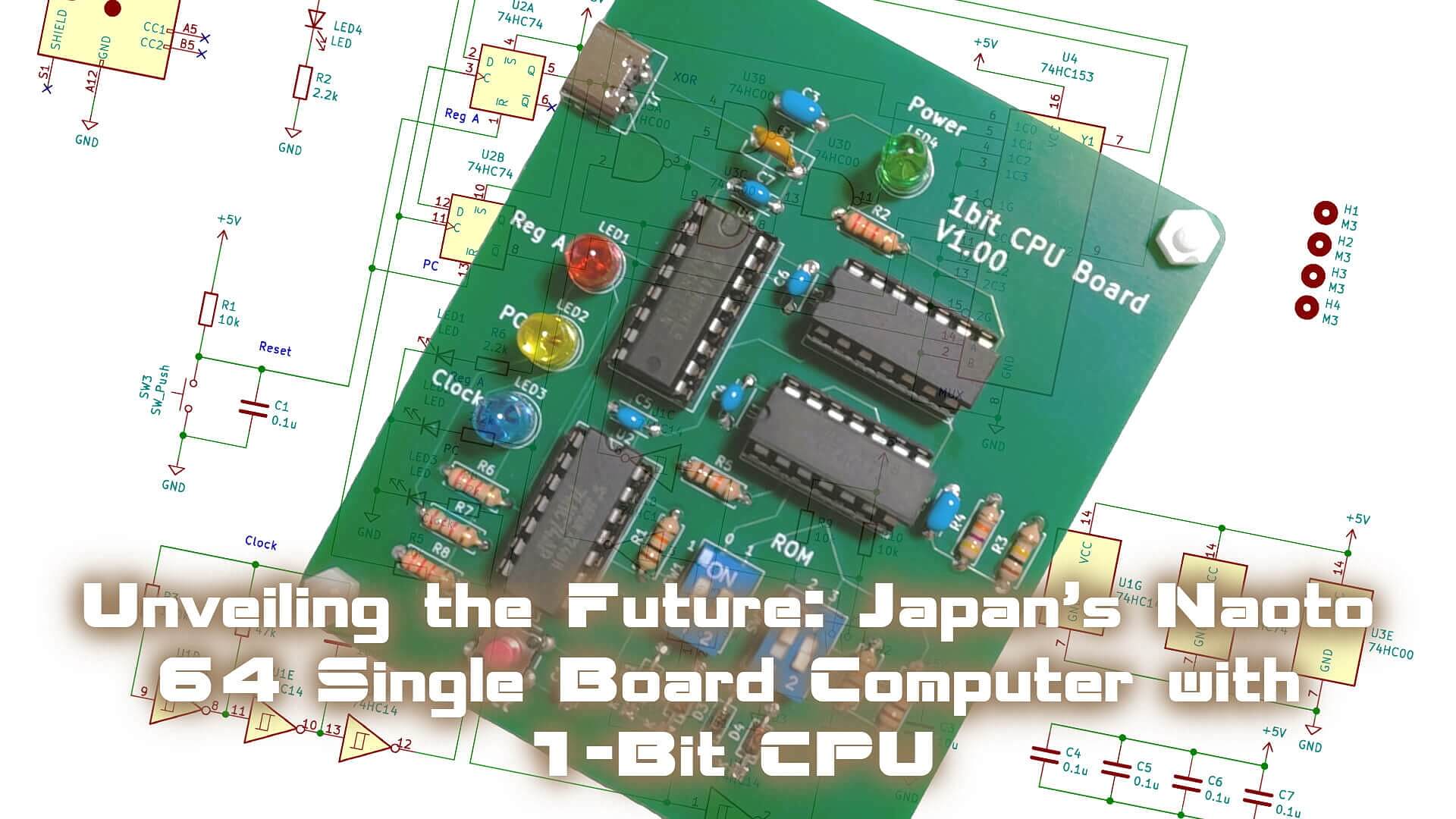In a landmark development in the world of computing, Japan has introduced the Naoto 64, a single board computer equipped with a 1-bit CPU. This innovative technology promises to redefine the landscape of embedded systems, pushing the boundaries of what was once thought possible in the realm of single board computers.
The Rise of Single Board Computers (SBCs)
Single board computers have gained significant traction in recent years, owing to their compact design, affordability, and versatility. These miniature computers pack a punch, offering a wide range of applications in fields such as education, prototyping, and embedded systems development. The Naoto 64 emerges as a pioneer in this space, introducing a 1-bit CPU architecture that sets it apart from its contemporaries.
Introducing Naoto 64
The Naoto 64 is a testament to Japan’s commitment to innovation. At its core lies a 1-bit CPU, a departure from the conventional multi-bit processors that dominate the market. This shift in architecture opens up new possibilities and challenges the traditional notions of computing power.
Unpacking the 1-Bit CPU
The 1-bit CPU at the heart of Naoto 64 may seem like a step backward in terms of processing power, but it represents a bold leap into uncharted territory. The decision to opt for a 1-bit architecture brings unique advantages, including reduced power consumption, simplified design, and enhanced efficiency for specific applications.
Applications of Naoto 64
The Naoto 64’s 1-bit CPU finds its niche in applications that require specialized processing rather than raw computational power. Industries such as IoT (Internet of Things), robotics, and real-time control systems stand to benefit significantly from this groundbreaking technology. The ability to perform specific tasks with unparalleled precision makes Naoto 64 a valuable tool in scenarios where efficiency is paramount.
Power Efficiency and Sustainability
One of the key advantages of the Naoto 64’s 1-bit CPU is its remarkable power efficiency. The reduced complexity of the architecture translates to lower energy consumption, making it an eco-friendly choice in a world increasingly concerned with sustainability. As electronic devices become an integral part of daily life, the Naoto 64 sets a new standard for environmentally conscious computing.
Challenges and Opportunities
While the Naoto 64 introduces exciting possibilities, it also comes with its set of challenges. Developers and engineers will need to adapt to the nuances of a 1-bit architecture, optimizing code for efficiency rather than brute force. However, the learning curve presents an opportunity for growth and innovation within the technology community.

Educational Impact
The Naoto 64 holds immense potential as an educational tool. Its unique architecture provides students with a hands-on experience in understanding the fundamentals of computing at a granular level. Aspiring engineers and programmers can explore the intricacies of low-level programming, gaining insights that extend beyond the capabilities of traditional multi-bit processors.
Community Collaboration and Open Source Development
Japan’s release of the Naoto 64 marks not only a technological milestone but also an opportunity for global collaboration. The open-source nature of many single board computers, including the Naoto 64, encourages developers worldwide to contribute to its growth. This collaborative effort could lead to the development of a vibrant ecosystem of applications and utilities tailored to the 1-bit architecture.
The Future of Computing
As the Naoto 64 makes its mark on the world of single board computers, it prompts us to reconsider our preconceived notions about processing power. The 1-bit CPU challenges the status quo and opens the door to a future where specialized computing becomes the norm. The implications reach far beyond the realm of electronics, influencing how we approach problem-solving and innovation.
And so
Japan’s release of the Naoto 64 single board computer with 1-bit CPU is a testament to the nation’s commitment to pushing the boundaries of technology. This groundbreaking development opens up new possibilities for power-efficient computing in specialized applications, challenging conventional notions of processing power. As the Naoto 64 finds its place in various industries and educational settings, it serves as a beacon of innovation, inspiring the global community to rethink the future of computing.



